|
I've settled on running 5 tests, each having 5 SE
"pops". This gives an average of 25 "pops," which
should even out any bumps. Also it is convenient
for logging the values -- I generally run 2 sets of
25 "pops."
Just to get my feet wet, I ran a couple of
trials. For these, I've created two metrics:
distance per "pop" and distance per uF.
The first trial I conducted was of a stock FRED
(I already had in my box) with varying capacitors;
2200, 4400, 6600, 8800 uF.
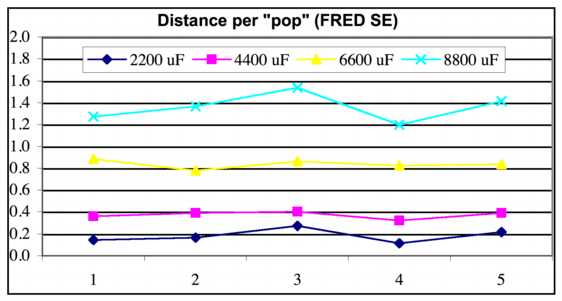
|
|
Distance
(inches) per "pop" of a FRED SE,
as a function of storage
capacitor size (click to
enlarge)
|
|
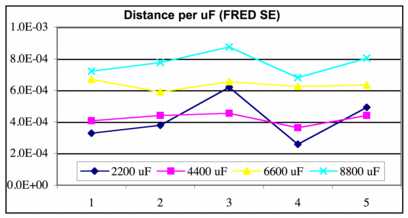
|
|
Distance
(inches) per uF of a FRED SE, as
a function of storage capacitor
size (click to
enlarge)
|
|
I found that on the FRED tests, it appears that
there is a non linear relationship in distance
travelled to capacitor size. By increasing the
capacitance by a factor of 4, you get an 8 fold
increase in distance, and almost double the
distance per uF (octane?).
The second set of trials I conducted compared
FRED vs. 1381 SEs using identical capacitors
and solar cells.
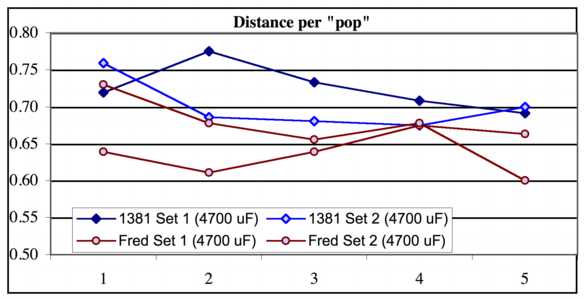
|
|
Distance
(inches) per "pop" of two SEs,
FRED vs. 1381 (click to
enlarge)
|
|
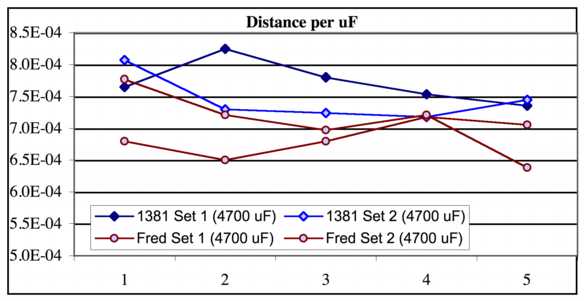
|
|
Distance
(inches) per uF of two SEs, FRED
vs. 1381 (click to
enlarge)
|
|
It was interesting to watch the cursor move
across the screen. I noticed that the cursor did
not move the same distance each time. This was
confirmed when I did the calculations.
So, I set up a 555 timer with a 5 volt
regulated supply to pulse the motor (a Solarbotics
pager from the solar racer) and ran tests on it.
Interestingly enough the distance traveled was very
nearly consistant [each within about 5% of
the average -- ed.].
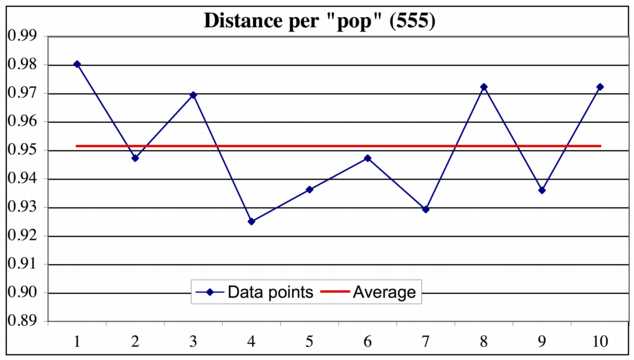
|
|
Distance (inches)
per "pop" of a 555-based circuit (click to
enlarge)
|
Since the 555 can be considered to output pulses
at a fairly constant frequency, this means that the
BETS1 is measuring SE behavior to within about 5%.
Not shabby for something you can build from a spare
computer mouse!
|




